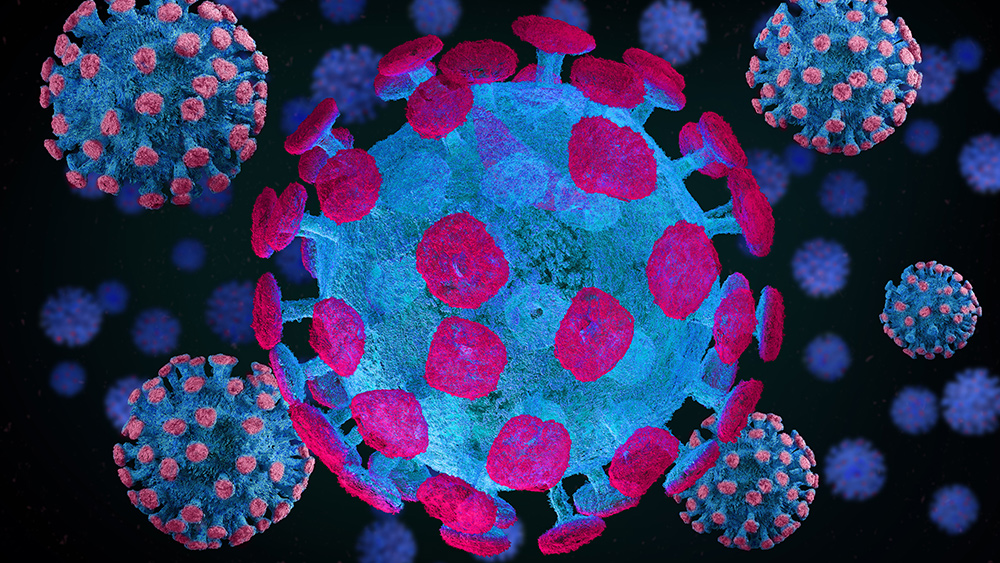Brains of young people exposed to dirty air show signs consistent with Alzheimer’s and Parkinson’s
10/09/2020 / By Divina Ramirez

It’s no secret that air pollution can damage the lungs and the heart. But new research suggests that exposure to polluted air can trigger neurodegeneration as well.
In a study published in the journal Environmental Research, an international team of researchers described how they found tiny air pollution particles lodged in the brain stems of young people. Alongside the particles, they also found markers not only of Alzheimer’s disease but also of Parkinson’s disease and motor neuron disease (MND).
The particles are thought to have come from vehicle exhaust due to their appearance and composition. The researchers also speculated that the particles reached the brain after being inhaled into the bloodstream through the nose and/or mouth.
But even though the study is an observational one, Barbara Maher, a professor of environmental science at Lancaster University in the UK and a member of the research team, isn’t convinced that the nanoparticles have been sitting harmlessly inside the brain.
“[It] seriously looks as if those nanoparticles are firing the bullets that are causing the observed neurodegenerative damage,” she said.
Should future studies confirm these groundbreaking findings, the research could have serious implications because 90 percent of the global population is living with unsafe air.
Evidence of neurodegeneration in people living in polluted cities
Previous studies have only linked fine particulate air pollution exposure to Alzheimer’s disease, the most common form of dementia. It is also more common in older adults than in children or young adults.
But according to Maher, children are useful for this field of research because their brains are free from the influence of other factors that often affect the brains of older adults, such as alcohol consumption.
For their research, Maher and her colleagues studied the brains of 186 deceased young subjects from Mexico City aged 11 months to 27 years old. The one thing common across all of the participants was exposure to air pollution.
Their examination showed evidence of plaques and tangles associated with Alzheimer’s, Parkinson’s and MND, even in the brainstem of the youngest subject.
Moreover, the researchers found tiny, metal-rich nanoparticles in the brainstems. In particular, they had high concentrations of iron-, aluminum- and titanium-rich nanoparticles, specifically in the substantia nigra and cerebellum. Both of these brain structures are crucial for motor movements.
The iron- and aluminum-rich nanoparticles were also similar to those that occur as combustion from engines, indicating that the particles are indeed from polluted air. These metal-rich nanoparticles are thought to cause inflammation and oxidative stress in the brain, which could kill or disable brain cells.
Furthermore, similar metal-rich particles were found in the nerve cells of the subjects’ gut wall, suggesting that the particles were also swallowed, not just inhaled. The particles could have then moved into the nerve cells in the gut, from which they then moved into the brainstem.
The researchers also studied the brainstems of age- and gender-matched controls who lived in areas with lower levels of air pollution. They did not find plaques, tangles, molecular damage and nanoparticles consistent with neurodegeneration in the brainstems of the controls.
The causes of neurodegeneration are so complex, often involving a host of factors like genetics, nutrition and stress. But air pollution is especially dangerous as a risk factor because of its prevalence in cities and urban communities.
“I don’t think that human systems have developed any defense mechanisms to protect themselves from nanoparticles,” said Maher.
In all, their findings indicate that exposure to air pollutants is especially significant in the development of neurological damage and the premature onset of neurodegeneration.
Maher recommends that policymakers take account of their findings in creating strategies for mitigating air pollution. (Related: California wildfires are causing unprecedented levels of air pollution.)
Read more articles about brain health and neurodegeneration at Brain.news.
Sources include:
Tagged Under:




















